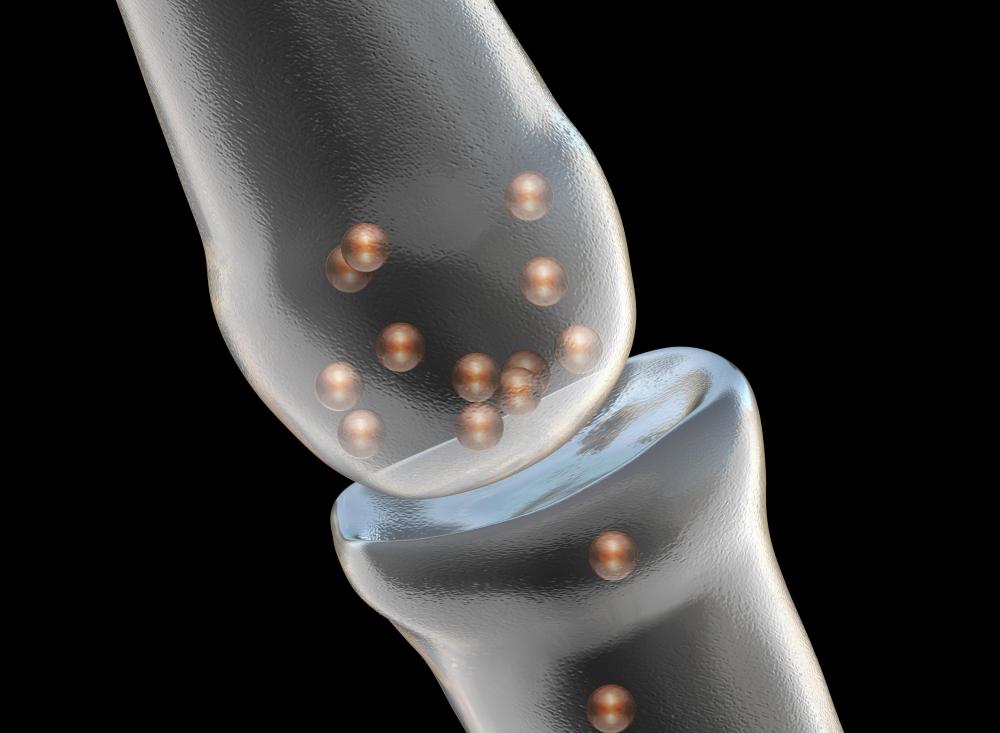At TheHealthBoard, we're committed to delivering accurate, trustworthy information. Our expert-authored content is rigorously fact-checked and sourced from credible authorities. Discover how we uphold the highest standards in providing you with reliable knowledge.
What Is Excitatory Postsynaptic Potential?
An excitatory postsynaptic potential is a change in the electrical charge of a nerve cell, or neuron. The neuron starts out with a negative charge, but the excitatory postsynaptic potential makes this charge more positive. If there are enough excitatory postsynaptic potentials, the neuron will send a signal to other cells.
The excitatory postsynaptic potential begins in the dendrites, which extend in all directions from the cell body like the branches on a tree. The potential continues through the cell body to the axon hillock. The axon hillock is a small hill at the beginning of an axon, which extends from the cell body like the trunk on a tree. The axon ends in synapses, which transmit chemicals across a space, called the synaptic cleft. These chemicals bind to receptors on the dendrites of another neuron.

When neurotransmitters bind to a neuron, they can either cause an excitatory postsynaptic potential or an inhibitory postsynaptic potential. When it is not receiving any signals, a neuron has a negative electrical charge. Excitatory postsynaptic potentials make this charge more positive, or closer to zero. Inhibitory postsynaptic potentials make the charge of the cell more negative.

Neurotransmitters binding to receptors on a neuron cause ion channels to open, allowing charged particles to enter the cell. An excitatory postsynaptic potential is caused by positively charged ions flowing into the cell. An inhibitory postsynaptic potential is caused by negatively charged ions entering the cell or positively charged ions flowing out of the cell.
A single neuron may receive many signals from several different neurons. Some of these signals will be excitatory and some will be inhibitory. All of the postsynaptic potentials are added together to calculate the net effect on the neuron.

Postsynaptic potentials are summed spatially and temporally. The further away from the axon hillock a postsynaptic potential is, the less effect it will have on the cell, because it has to travel a long way to the axon hillock where all the potentials are added together. The longer a postsynaptic potential lasts, the greater the effect it will have on the overall charge of the cell. A postsynaptic potential lasts as long as the neurotransmitters are bound to the cell.
All of the postsynaptic potentials are summed together at the axon hillock. If the combined charge of all the signals is positive enough, the cell will fire an action potential, which travels down the axon to the synapses. The synapses will then release neurotransmitters, which will bind to other neurons to transmit a message.
AS FEATURED ON:
AS FEATURED ON:













Discuss this Article
Post your comments